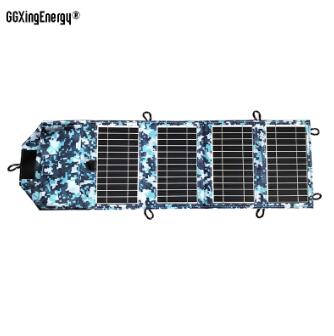Maximizing the Efficiency of Solar Chargers: Tips and Best Practices
2024-08-12
As solar chargers become increasingly popular, understanding how to maximize their efficiency is essential for getting the most out of this technology. In this blog, we'll explore the factors that affect the performance of solar chargers and provide tips and best practices to help you harness the full potential of solar energy for your devices.
1. Understanding the Key Factors Affecting Solar Charger Efficiency
Several factors can influence the efficiency of a solar charger, from the quality of the photovoltaic cells to the environmental conditions in which the charger is used.
- Solar Panel Quality: The efficiency of a solar charger is largely determined by the quality of its photovoltaic cells. High-quality panels with advanced technologies, such as monocrystalline or polycrystalline cells, typically offer better performance and faster charging times.
- Sunlight Exposure: The amount of sunlight a solar charger receives directly impacts its ability to generate electricity. Chargers perform best in direct sunlight, so positioning them in a location with unobstructed access to the sun is crucial.
- Temperature and Weather Conditions: Extreme temperatures and adverse weather conditions can affect the performance of solar chargers. High temperatures can reduce the efficiency of PV cells, while cloudy or rainy weather can limit the amount of sunlight available for energy generation.
- Angle of the Solar Panels: The angle at which the solar panels are positioned relative to the sun can also impact their efficiency. Adjusting the panels to face the sun directly can maximize energy absorption.
2. Tips for Maximizing Solar Charger Efficiency
By following a few simple tips, you can enhance the performance of your solar charger and ensure that your devices receive the power they need.
- Optimal Positioning: Place your solar charger in a location that receives maximum sunlight throughout the day. Avoid areas with shadows or obstructions that could block the sun's rays. For best results, angle the charger towards the sun, adjusting as needed to follow the sun's path.
- Keep the Panels Clean: Dirt, dust, and debris can accumulate on the surface of solar panels, reducing their ability to absorb sunlight. Regularly clean the panels with a soft cloth and mild soap to maintain their efficiency.
- Monitor Charging Progress: Keep an eye on the charging progress of your devices to ensure they are receiving sufficient power. Some solar chargers come with built-in indicators that display the charging status, allowing you to monitor performance in real-time.
- Use a Battery Bank: To store energy for later use, consider pairing your solar charger with a portable battery bank. This allows you to capture and store excess energy during peak sunlight hours, ensuring that you have a backup power source when sunlight is limited.
- Choose the Right Charger for Your Needs: Select a solar charger with a power output that matches the energy requirements of your devices. A charger with too low an output may not be able to charge larger devices efficiently, while a higher output model can handle multiple devices simultaneously.
3. Best Practices for Using Solar Chargers in Different Environments
Solar chargers can be used in a variety of environments, from urban settings to remote wilderness areas. Adapting your usage to the specific conditions of your environment can help you get the most out of your solar charger.
- Urban Use: In urban environments, where direct sunlight may be limited, look for areas with the most sun exposure, such as rooftops, balconies, or open parks. Keep in mind that tall buildings can cast shadows, so reposition your charger as needed throughout the day.
- Outdoor Adventures: When using a solar charger during outdoor activities like camping or hiking, take advantage of natural clearings or elevated areas with unobstructed sunlight. Mounting the charger on a backpack or tent can help you capture energy while on the move.
- Emergency Situations: In emergency situations, such as power outages, position your solar charger in the sunniest spot available, even if it means moving it throughout the day to follow the sun. Having a fully charged battery bank on hand can provide additional peace of mind.
4. The Future of Solar Chargers: Advancements and Innovations
The future of solar chargers looks promising, with ongoing advancements in solar technology paving the way for more efficient and powerful devices.
- Improved Solar Cells: Research into new materials and cell structures is leading to the development of solar panels with higher efficiency rates, enabling faster charging times and better performance in low-light conditions.
- Integration with Smart Technology: Some solar chargers are now being designed with smart technology features, such as app-based monitoring and automatic tracking systems that adjust the panels' angle to follow the sun.
- Increased Durability: Innovations in materials and design are resulting in more rugged and durable solar chargers that can withstand harsh environmental conditions, making them ideal for use in extreme climates.
Conclusion
Solar chargers offer a sustainable and convenient way to power your devices, but maximizing their efficiency requires careful consideration of various factors and best practices. By choosing the right charger, optimizing its placement, and keeping it well-maintained, you can ensure that your solar charger delivers the best possible performance. As solar technology continues to evolve, these chargers will become even more powerful and versatile, making them an indispensable tool for anyone seeking a reliable, eco-friendly power source.



